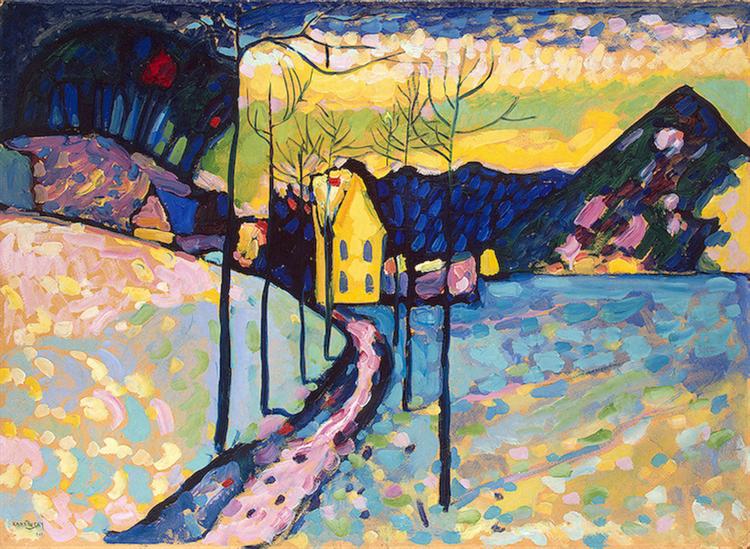Description
Wassily Kandinsky, one of the masters Undisputed of the abstraction and pioneer of modern art, it offers us in his work "Winter landscape" (1909) a window towards his interpretation of the natural world, fusing the figurative representation with an atmosphere of subjective emotionality. This work, even in a more regional phase of his career, shows us a crucial transition in his style towards abstraction that would characterize his subsequent works, being both a testimony of his connection with the Russian landscape.
The composition of "winter landscape" is presented through a delicate balance between shapes and colors that is articulated in an environment that remembers the stillness of a snowy day. He painting It evokes an imminent serenity in the midst of winter, where trees stand as stylized, almost ghostly, emerging snow such as shady silhouettes. The nuances of blue and white are intertwined, creating an ethereal atmosphere that invites the viewer to explore the depth of the landscape, while highlighting the vibrant intensity of the cold that surrounds it. The choice of a palette that ranges between dark and light tones, often complemented by warm terracotta and ocher tones, demonstrates Kandinsky's ability to evoke sensations through color, something that would become fundamental in his work.
As the painting In detail, elements that suggest a sense of movement are perceived, such as the wind that could be whipping the snow or the ramifications of the trees that seem to dance in a subtle sway. The absence of human figures in this landscape is particularly significant, since it places the natural environment in the center of emotional experience, which highlights Kandinsky's interest in the inanimate landscape as a source of spiritual inspiration. This elimination of the human figure invites the viewer to reflect on the relationship between the individual and the environment, at a time where the connection with nature begins to understand as a form of introspection.
It is important to consider the context in which Kandinsky created this work. In 1909, the artist was in a moment of personal and professional exploration, assimilating influences that went from symbolism to impressionism. Their experiences with the Russian landscape were undoubtedly deep and, through "winter landscape", you can see how these influences are amalgamated in a work that, although seen at a distance, presses its future abstract style. The forms in their painting are not designed to be a mere naturalistic representation, but instead become visual awareness, where each stroke and each color are loaded with meaning.
In conclusion, "winter landscape" is a work that, without being radically abstract, begins to draw the path to a pictorial language that Kandinsky would explore later. The work encapsulates the essence of what it means to see beyond the apparent, exploring the emotional and the spiritual in the context of the landscape. Kandinsky invites us to consider nature not only as a physical space, but as a space for reflection on ourselves and our relationship with the world. This work is, therefore, more than a representation; It is a sensory experience that is dramatically positioned in the history of modernist art.
KUADROS ©, a famous paint on your wall.
Hand-made oil painting reproductions, with the quality of professional artists and the distinctive seal of KUADROS ©.
Art reproduction service with satisfaction guarantee. If you are not completely satisfied with the replica of your painting, we refund your money 100%.

